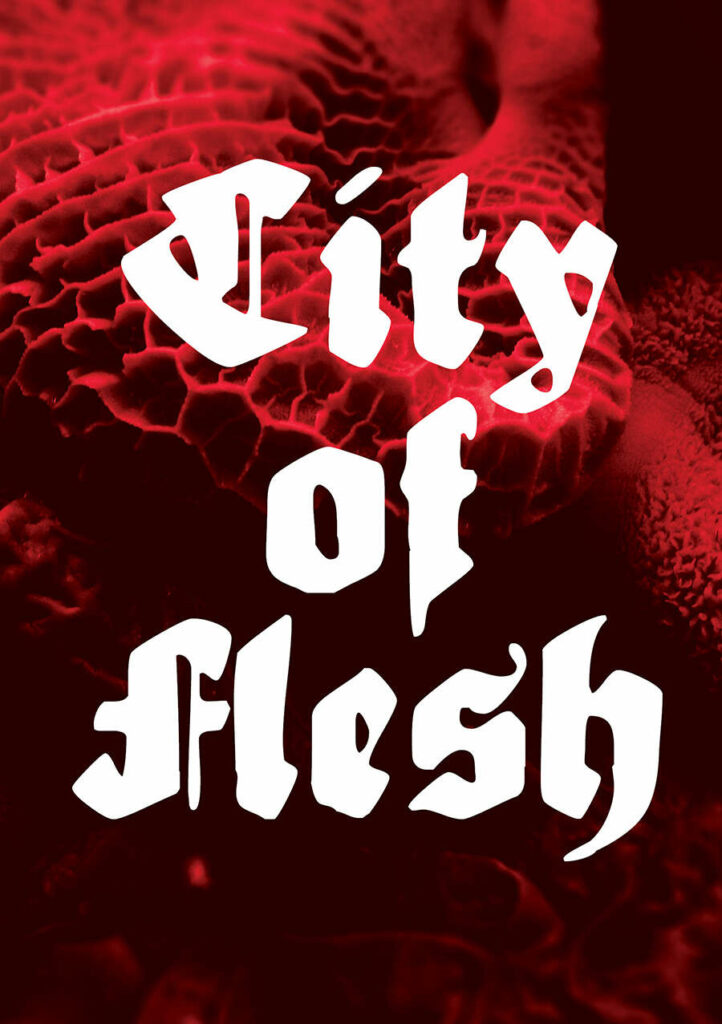I started to feel that I didn’t know roleplaying games well enough so I came up with the plan to read a roleplaying game corebook for every year they have been published. Selection criteria is whatever I find interesting.

City of Flesh is a compact Dutch roleplaying game published as part of Kickstarter’s 2021 ZineQuest promotion by Elizabeth Chaipraditkul and Steffie de Vaan. It’s mechanics are based on the Tarot deck.
The concept of the game is rather striking: Nagara, the titular City of Flesh, has been built into the womb of a slain Colossus. A doom approaches the city, a rebirth in which it becomes something else. The player characters are called Midwives, and their job is to guide the city towards what happens next.
In style, City of Flesh is very contemporary in that you can detect all kinds of influences. The style of presentation and worldbuilding is very OSR, or at least horror strands of OSR like Mothership or Mörk Borg. On the other hand, the Tarot mechanics remind you of Storygames or even the Norwegian game Itras by with its prompt cards.
There’s an interesting dichotomy in roleplaying game design between cliché and originality, tropes and new concepts. Clichés and tropes are not necessarily a bad thing at all: Games like Apocalypse World are built on a purposefully clichéd take on the postapocalyptic genre because this makes it possible for participants to improvise freely. They know the clichés so they know the world.
(Of course, this only works if the players really do know the clichés. A player without the relevant cultural knowledge is in trouble.)
In these designs, the cliché is an accelerator, allowing the players to access the game faster because they don’t have to spend time on learning the basic minutiae of the world.
The downside of designing with clichés is that they’re boring.
City of Flesh is at the other end of the spectrum from Apocalypse World in that its setting is original. There is no broad genre of games, movies and tv set in flesh-based urban environments. Although there are horror trappings, these are used in a very specific way, and to play the game you first have to grasp the world and its mythology. This means that you have to put in more work up front just figuring out the environment but the payoff may be more interesting since new ideas lead to new places.
Setting design is game design and it’s lovely to see a game with such nifty concepts packed into such a small release. During this reading project, it has felt like the Nineties were the high water mark for setting design, epitomized by the extravagant worlds built for AD&D 2nd Edition. With the 3rd and subsequent editions, D&D demonstrates the broad turning away from setting that has occurred since the 2000’s. Since that time, the governing concept of roleplaying design discourse has been system, to such a degree that in online discussions system is sometimes used as a synonym for roleplaying game.
Right now, we’re living in the golden age of mainstream geek media, with seemingly every videogame, comic book and old tv show revived and repurposed into a new media spectacle. In this light, it’s bit of a shame that roleplaying games in general abandoned the worldbuilding and IP generating capabilities demonstrated in the Nineties in favor of system-first games. Because of this, roleplaying is relegated to making licensed games based on other media instead of generating its own properties that could then be grown into transmedia spectacles.
Perhaps City of Flesh points to a future where innovative setting design makes a comeback. One can always hope!